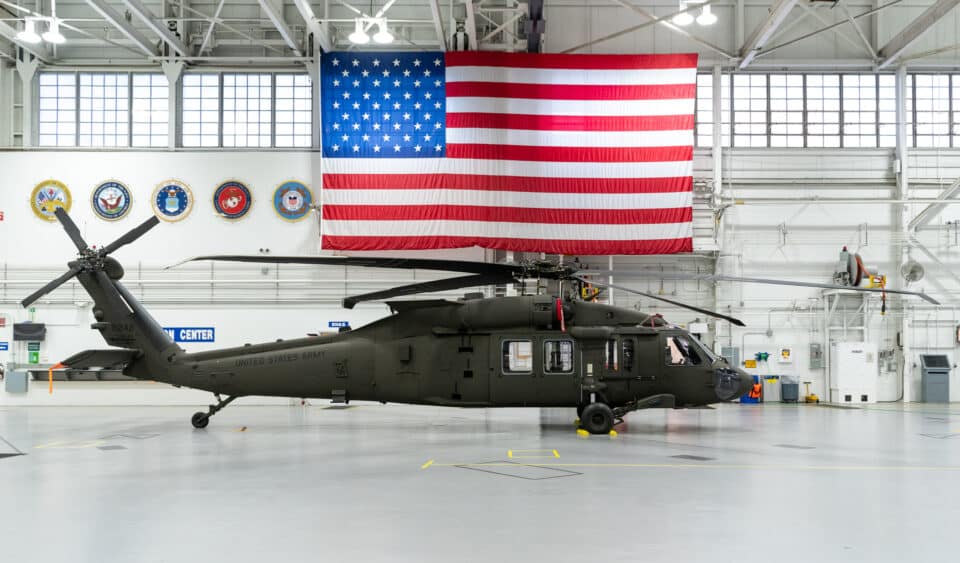Aviation
Sikorsky Delivers 5,000th “Hawk,” Highlights Versatility And Future Of Iconic Helicopter

Sikorsky, a Lockheed Martin company delivered its 5,000th “Hawk” variant helicopter, a U.S. Army UH-60M Black Hawk. The iconic aircraft will continue to support medium-lift requirements for the U.S. military and international operators for decades into the future.
Customers worldwide depend on the Black Hawk platform and its derivatives, including MH-60R/S maritime operations helicopters, MH-60T multi-mission helicopters, HH-60W rescue helicopters and internationally built S-70 Black Hawks to include the baseline FIREHAWK, which have all proven their versatility and capability across a spectrum of challenging mission sets.
Sikorsky’s highly skilled and experienced workforce manufactures the latest generation of Hawk aircraft built in Stratford, and there is high international demand for the Sikorsky S-70 Black Hawk, manufactured by Lockheed Martin’s PZL Mielec facility in Poland. More than 35 international customers operate the Black Hawk thanks to its global support network and continued modernization.
The U.S. Army, the largest Black Hawk operator, noted the key role the aircraft continues to fulfill during military and civil operations around the world, in addition to its significant contribution towards Joint All Domain Operations.
The Future of the Black Hawk
As U.S. Army Future Vertical Lift aircraft are fielded, the Black Hawk will remain the foundational tactical air assault and utility aircraft for the U.S. Army. Modernization efforts that improve Black Hawk availability and reliability by lowering direct operating costs include:
- A Modular Open Systems Approach allowing rapid integration of emerging technologies to maintain relevance in future operations by increasing reach, survivability, lethality and sustainment;
- Improved Turbine Engine to increase lift capability and range;
- Advanced Digital Vehicle Management Systems supporting Degraded Visual Environment and automated operations; and
- Digital tools including predictive analytics that reduce aircraft downtime and maintenance costs.

Aviation
Boeing, Antonov to Collaborate on Defense Projects

– MOU represents Boeing’s commitment to work with Ukrainian industry
– Includes exploring opportunities for collaborating on in-country support of Unmanned Aerial Systems
A Memorandum of Understanding was signed today by Boeing and Antonov Company to investigate potential collaboration on defense-related projects.
“We’re happy to keep collaborating with the Antonov Company to help Ukraine’s economic development and expansion,” stated Ted Colbert, CEO and president of Boeing Defence, Space, & Security.
Airbus and the Antonov An-225: The Best Partnership:Click here
“This agreement demonstrates our ongoing efforts to find more opportunities to work with Ukrainian industry, which was underscored by our signing of the Ukrainian Defence Industry Compact earlier this year.”
The areas of potential collaboration identified in the agreement consist of training, logistical support and overhaul services for tactical Unmanned Aerial Systems utilized by the Ukrainian Armed Forces, which includes the ScanEagle. In addition, the companies will also explore opportunities for Antonov to provide engineering support to Boeing.
The six largest cargo aircraft ever built in the aviation industry:Click here
“A strong, innovative, and efficient defense industry is key to sustainable economic development and national security, and we are extremely excited to collaborate with Boeing,” said Ievhen Gavrylov, CEO of Antonov Company.
This agreement brings a whole new level of opportunity to implement the latest and most effective solutions – in addition to the possibility of future projects with Boeing in the aerospace and defense industry.”
-

 Travel1 week ago
Travel1 week agoAir India to Expand US Operations with Three New Routes After a Decade
-

 Travel2 weeks ago
Travel2 weeks agoWhy We Should Avoid These Stamps in a Passport
-

 Airlines1 month ago
Airlines1 month agoInvestigations Reveal Fake Chinese Titanium in Boeing and Airbus Jets
-

 Tech4 weeks ago
Tech4 weeks agoChina’s CATL Plans 1,800-Mile Electric Plane Launch by 2027
-

 Airport3 days ago
Airport3 days agoTop 10 Largest Airports in the World by Size
-

 Aerospace4 weeks ago
Aerospace4 weeks agoChina’s Fighter Jets Turn Wings into Autonomous Drones
-

 Airlines4 days ago
Airlines4 days agoAir India Rolls Out A350s for Delhi-New York JFK and Newark Routes
-

 Defence3 weeks ago
Defence3 weeks agoBoeing Enhances Chinook with New Engines and Block II Upgrades at $96 Million







